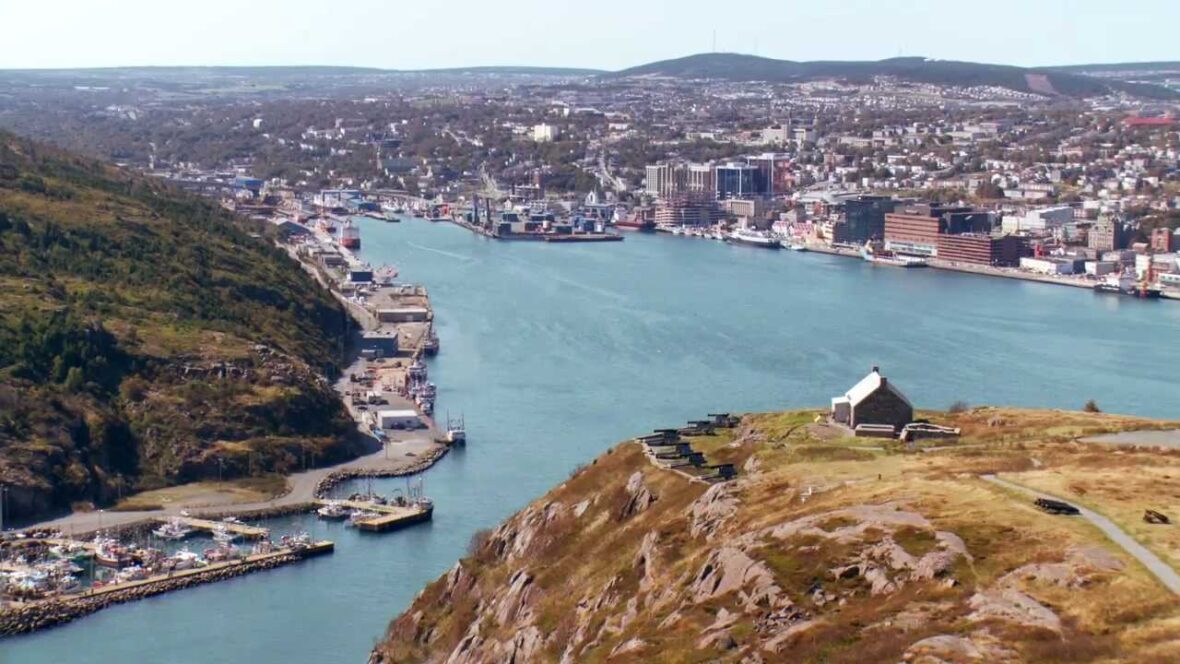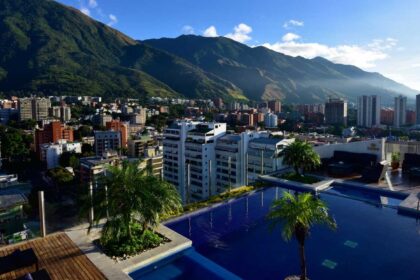St. John’s is the capital and largest city of the Canadian province of Newfoundland and Labrador. It is on the eastern tip of the Avalon Peninsula on the large Canadian island Newfoundland. Take a look below for 30 interesting and fun facts about St. John’s, Newfoundland and Labrador, Canada.
1. The city spans 446.04 square kilometres (172.22 sq mi) and is the easternmost city in North America (excluding Greenland).
2. Its name has been attributed to the Nativity of John the Baptist, when John Cabot was believed to have sailed into the harbour in 1497 and to a Basque fishing town with the same name. Existing on maps as early as 1519, it is one of the oldest cities in North America.
3. It was officially incorporated as a city in 1888. With a metropolitan population of approximately 219,207 (as of 1 July 2017), the St. John’s Metropolitan Area is Canada’s 20th largest metropolitan area and the second largest Census Metropolitan Area (CMA) in Atlantic Canada, after Halifax.
4. The city has a rich history, having played a role in the French and Indian War, the American Revolutionary War, and the War of 1812. Italian inventor Guglielmo Marconi received the first transatlantic wireless signal in St. John’s.
5. Its history and culture have made it into an important tourist destination.
6. St. John’s is the oldest post-Columbian European settlement in North America, with fishermen setting up seasonal camps in the early 1500s. Sebastian Cabot declared in a handwritten Latin text in his original 1545 map that St. John’s earned its name when he and his father, the Venetian explorer John Cabot, in the service of England, became the first Europeans to sail into the harbour, on the morning of 24 June 1494 (against British and French historians stating 1497), the feast day of Saint John the Baptist.
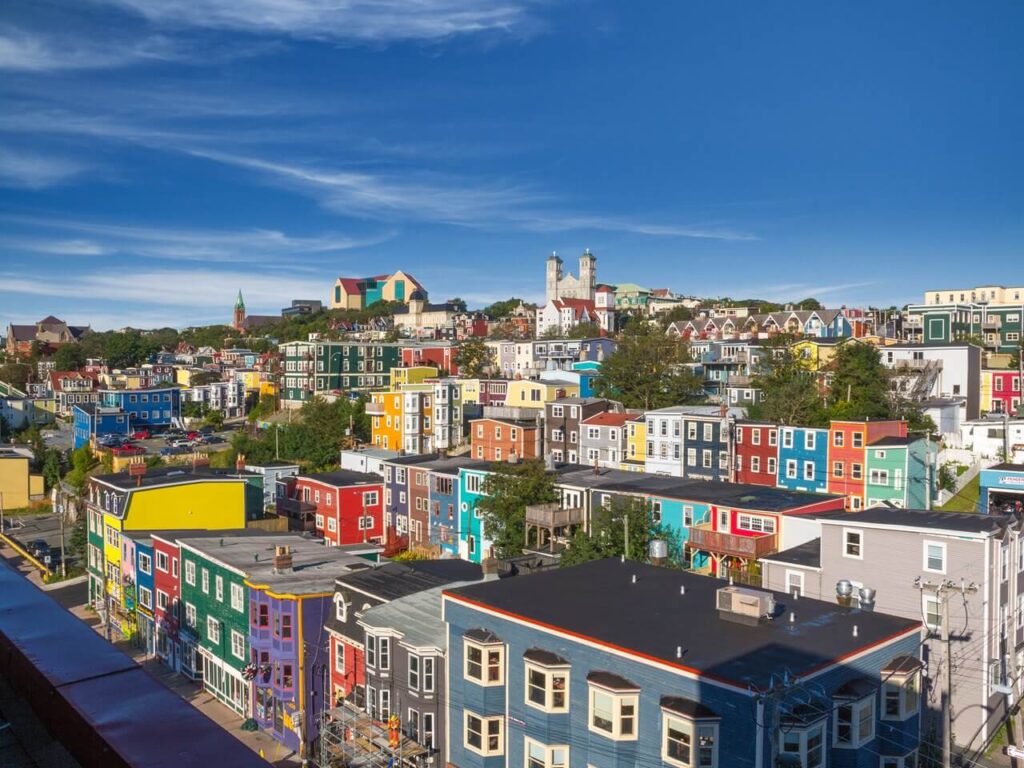
7. However, the locations of Cabot’s landfalls are disputed. A series of expeditions to St. John’s by Portuguese from the Azores took place in the early 16th century, and by 1540 French, Spanish and Portuguese ships crossed the Atlantic annually to fish the waters off the Avalon Peninsula. In the Basque Country, it is a common belief the name of St. John’s was given by Basque fishermen because the bay of St. John’s is very similar to the Bay of Pasaia in the Basque Country, where one of the fishing towns is called St. John (in Spanish, San Juan, and in Basque, Donibane).
8. The earliest record of the location appears as São João on a Portuguese map by Pedro Reinel in 1519. When the English mariner John Rut visited St. John’s in 1527, he found Norman, Breton and Portuguese ships in the harbour.
9. On 3 August 1527, Rut wrote a letter to King Henry on the findings of his voyage to North America; this was the first known letter sent from North America. St. Jehan is shown on Nicolas Desliens’ world map of 1541, and San Joham is found in João Freire’s Atlas of 1546.
10. On 5 August 1583, an English Sea Dog, Sir Humphrey Gilbert, claimed the area as England’s first overseas colony under Royal Charter of Queen Elizabeth I.
11. There was no permanent population, however, and Gilbert was lost at sea during his return voyage, thereby ending any immediate plans for settlement. The Newfoundland National War Memorial is on the waterfront in St. John’s, at the purported site of Gilbert’s landing and proclamation.
12. Sometime after 1630, the town of St. John’s was established as a permanent community. Before this they were expressly forbidden by the English government, at the urging of the West Country fishing industry, from establishing permanent settlements along the English-controlled coast.
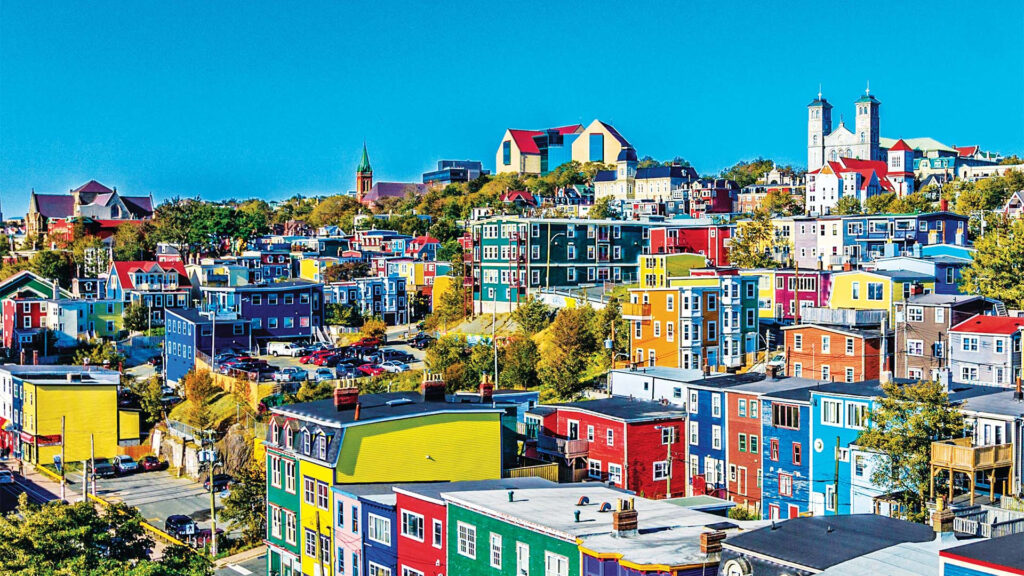
13. The population grew slowly in the 17th century: St. John’s was Newfoundland’s largest settlement when English naval officers began to take censuses around 1675.
14. The population grew in the summers with the arrival of migratory fishermen. In 1680, fishing ships (mostly from South Devon) set up fishing rooms at St. John’s, bringing hundreds of Irish men into the port to operate inshore fishing boats.
15. The town’s first significant defenses were likely erected due to commercial interests, following the temporary seizure of St. John’s by the Dutch admiral Michiel de Ruyter in June 1665.
16. The inhabitants fended off a second Dutch attack in 1673, when it was defended by Christopher Martin, an English merchant captain. Martin landed six cannons from his vessel, the Elias Andrews, and constructed an earthen breastwork and battery near Chain Rock commanding the Narrows leading into the harbour. With only 23 men, the valiant Martin beat off an attack by three Dutch warships.
17. The English government planned to expand these fortifications (Fort William) in around 1689, but construction didn’t begin until after the French admiral Pierre Le Moyne d’Iberville captured and destroyed the town in the Avalon Peninsula Campaign (1696). When 1500 English reinforcements arrived in late 1697, they found rubble where the town and fortifications had stood.
18. The French attacked St. John’s again in 1705 (Siege of St. John’s), and captured it in 1708 (Battle of St. John’s), devastating civilian structures with fire on each instance. The harbour remained fortified through most of the 18th and 19th centuries.
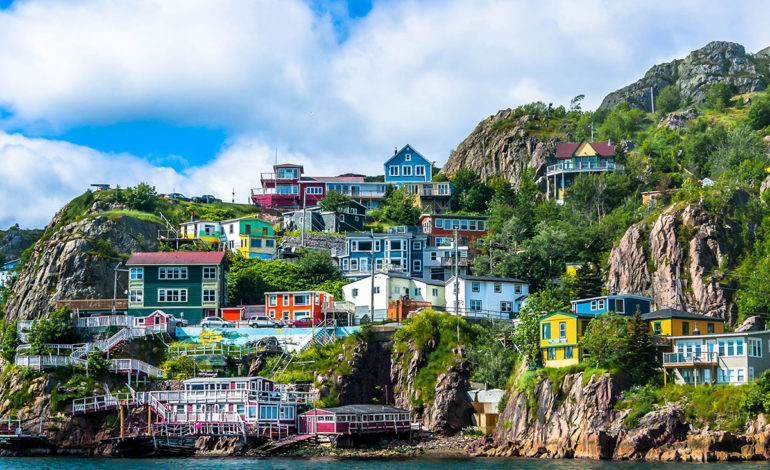
19. The final battle of the Seven Years’ War in North America (the French and Indian War) was fought in 1762, in St. John’s. Following a surprise capture of the town by the French early in the year, the British responded and, at the Battle of Signal Hill, the French surrendered St. John’s to British forces under the command of Colonel William Amherst.
20. In the late 1700s Fort Amherst and Fort Waldegrave were built to defend the harbour entrance.
21. St John’s was destroyed by major fires in 1816, 1817, 1819, 1846 and 1892, when each time a large part of the city was destroyed. The most famous was the Great Fire of 1892.
22. Coniferous trees such as black spruce, white spruce, and balsam fir dominate the native vegetation. The largest deciduous tree is white birch; species of lesser stature include alder, cherry and mountain ash. Of introduced tree species, sycamore maple is most abundant and Norway maple is common. Blue spruce, common horsechestnut, European beech and littleleaf linden are among the other non-native species grown.
23. St. John’s has a humid continental climate (Köppen Dfb) bordering on a subarctic climate (Dfc), with smaller seasonal variation than normal for the latitude, which is due to Gulf Stream moderation.
24. Of major Canadian cities, St. John’s is the foggiest (124 days) and windiest (24.3 km/h (15.1 mph) average speed. Precipitation is frequent and often heavy, falling year round. On average, summer is the driest season, with only occasional thunderstorm activity, and the wettest months are from October to January, with December the wettest single month, with nearly 165 millimetres or 6.50 inches of precipitation on average.
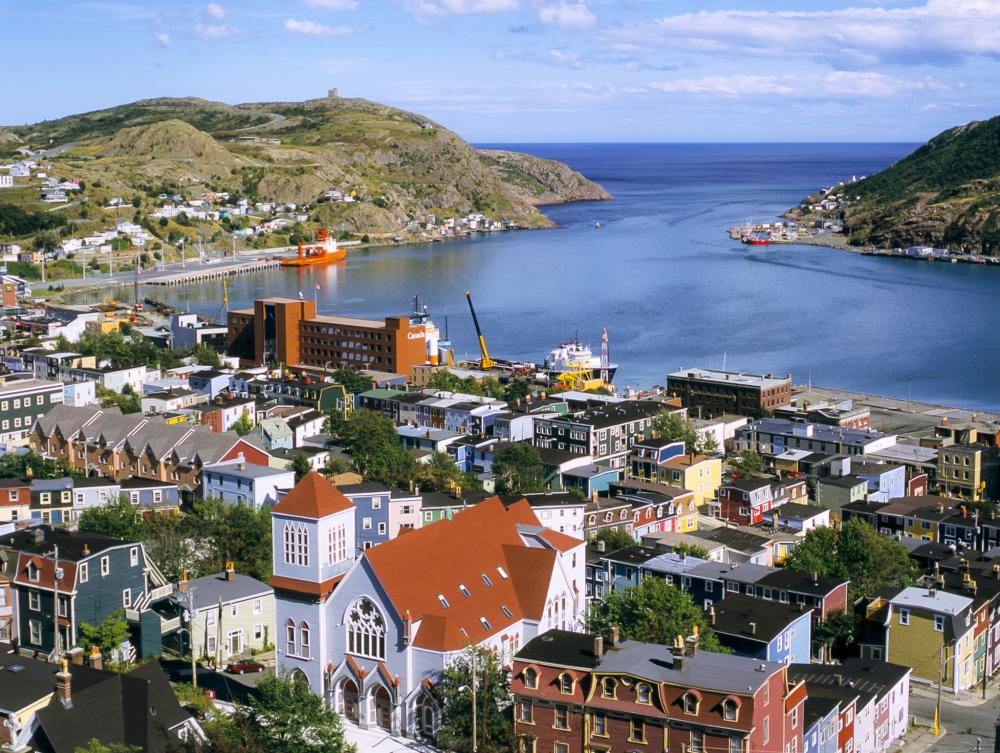
25. The highest temperature ever recorded in St. John’s was 33.9 °C (93.0 °F) on 14 August 1876.
26. The coldest temperature ever recorded was −29.4 °C (−20.9 °F) on 16 February 1875.
27. Predominantly Christian, the population of St. John’s was once divided along sectarian (Catholic/Protestant) lines. In recent years, this sectarianism has declined significantly, and is no longer a commonly acknowledged facet of life in St. John’s. St. John’s is the seat of the Roman Catholic Archbishop of St. John’s, and the Anglican Bishop of Eastern Newfoundland and Labrador. All major Christian sects showed a decline from 2001 to 2011 with a large increase in those with no religion from 3.9% to 11.1%.
28. St. John’s economy is connected to both its role as the provincial capital of Newfoundland and Labrador and to the ocean. The civil service which is supported by the federal, provincial and municipal governments has been the key to the expansion of the city’s labour force and to the stability of its economy, which supports a sizable retail, service and business sector.
29. The downtown area is the cultural hub of St. John’s and is a major tourist destination in Newfoundland and Labrador and Atlantic Canada. Water Street and Duckworth Street are known for their brightly coloured low rise heritage buildings, housing numerous tourist shops, clothing boutiques, and restaurants.
30. The Nickel Film Festival and the St. John’s International Women’s Film Festival are two independent film festivals held annually in St. John’s.

